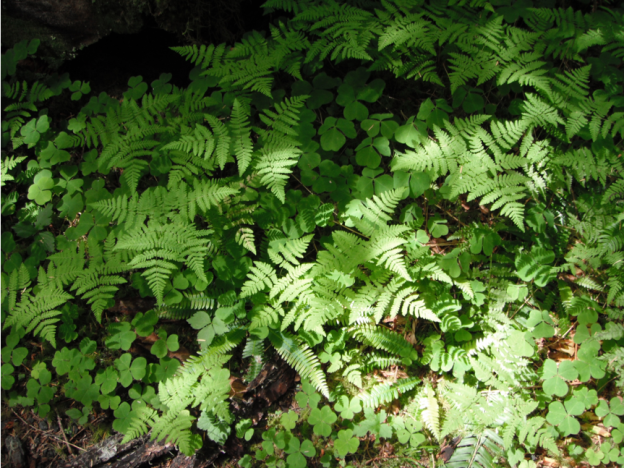The Wood Fern Family—Dryopteridaceae
Western Oak Fern Gymnocarpium dryopteris (L.) Newman (jim-no-KARP-ee-um dry-OP-ter-is) (Tetraploid N-80) &
Pacific Oak Fern Gymnocarpium disjunctum (Rupr.) Ching (jim-no-KARP-ee-um dis-junkt-um) –Formerly considered a subspecies of G. dryopteris. (Diploid N=40)
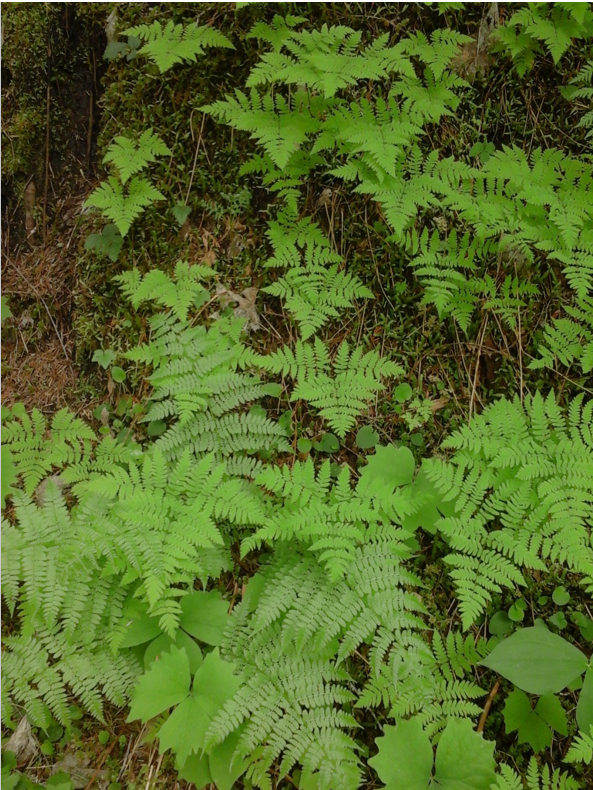 Names: Gymnocarpium means naked fruit because the spore cases are not covered with an indusium. The common name and specific epithet dryopteris refers to its similarity to the genus Dryopteris, (which literally means Oak (or Wood) Fern). Disjunctum refers to the separation of this species from G. dryopteris.
Names: Gymnocarpium means naked fruit because the spore cases are not covered with an indusium. The common name and specific epithet dryopteris refers to its similarity to the genus Dryopteris, (which literally means Oak (or Wood) Fern). Disjunctum refers to the separation of this species from G. dryopteris.
Relationships: There are only about 8 species of gymnocarpium, mostly in the temperate regions of the northern hemisphere. Common names of G. dryopteris include Western or Northern Oak Fern. Dryopteris disjuncta is a botanical synonym. Many of the western forms appear to be diploid, as opposed to the European and eastern U.S. tetraploids, and are now often given the name, Pacific or Western Oak Fern, G. disjunctum (disjunct- means separated).
Distribution: G. dryopteris is distributed throughout the Northern Hemisphere, whereas G. disjunctum is confined to the coastal northwest of North America and the Pacific coast of Russia. G. dryopteris is listed as endangered, threatened or vulnerable in Illinois, Maryland, Iowa, Ohio, Rhode Island, and New York.
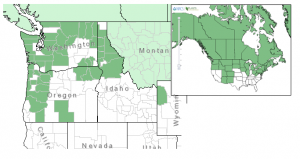
Distribution of Western Oak Fern from USDA Plants Database
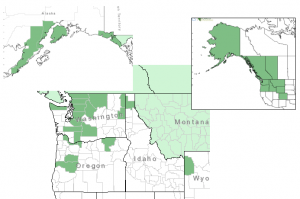
Distribution of Pacific Oak Fern from USDA Plants Database
Growth: Pacific Oak Fern is generally a larger plant than Western Oak Fern (10-40 cm vs. 5-25 cm long fronds), with more divided leaves and smaller spores.
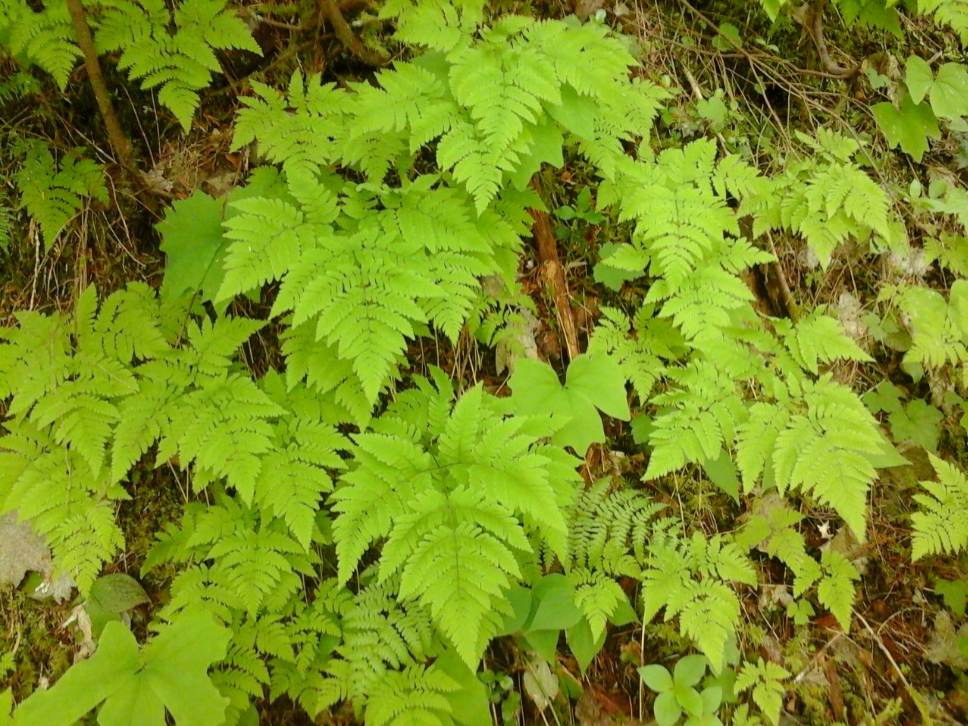
It is hard to tell the difference between these two species and I admit I am not an expert, but I believe this is a Pacific Oak Fern.
Habitat: In the Pacific Northwest, these ferns grow in shady, moist woods, streambanks and wet cliffs. Despite its name, it is not usually found in association with oaks, preferring mixed coniferous forests. Wetland designation: FAC, Facultative, it is equally likely to occur in wetlands or non-wetlands.
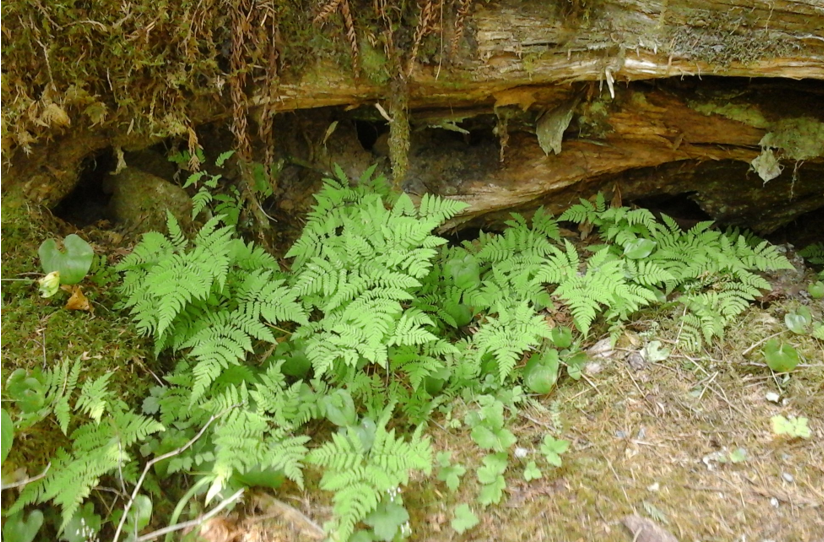
Diagnostic Characters: Although the fronds are most often born singly, they spread by rhizomes, forming large colonies. The deciduous fronds are broadly triangular, 2-3 pinnate and hairless. Spore cases are round and uncovered.
In the Landscape: Oak Ferns make a nice groundcover in a woodland garden; their lush, bright green fronds brighten a dark forest floor. They can be propagated by division.
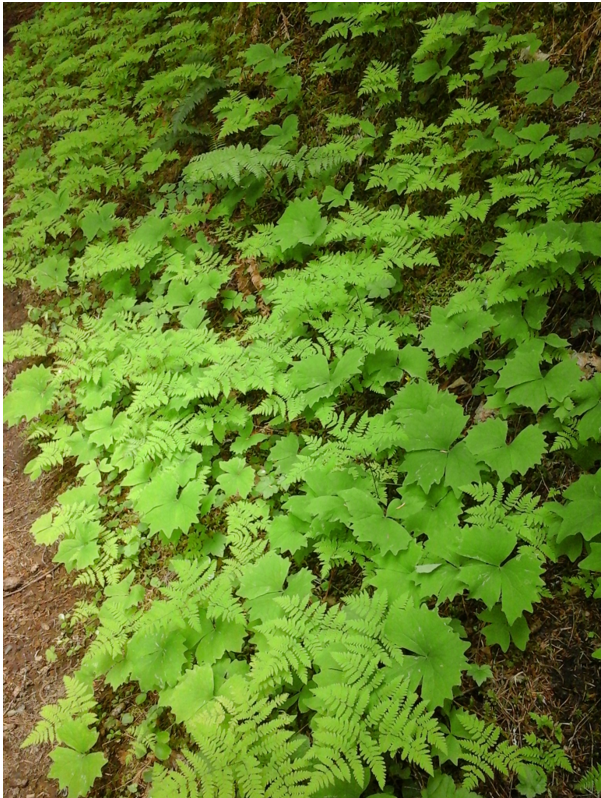
Oak Fern and Vanilla Leaf on a forest floor.
Use by People: The presence of Oak Fern was a sign of water for the Okanagan tribe when travelling through the mountains.
Use by Wildlife: Grizzly Bear and Elk have been observed eating Oak Fern.
Links for Gymnocarpium dryopteris:
Consortium of Pacific Northwest Herbaria
WTU Herbarium Image Collection, Plants of Washington, Burke Museum
E-Flora BC, Electronic Atlas of the Flora of British Columbia
Ladybird Johnson Wildflower Center
USDA Forest Service-Fire Effects Information System
Native Plants Network, Propagation Protocol Database
Native American Ethnobotany, University of Michigan, Dearborn
Links for Gymnocarpium disjunctum:
Consortium of Pacific Northwest Herbaria
WTU Herbarium Image Collection, Plants of Washington, Burke Museum
E-Flora BC, Electronic Atlas of the Flora of British Columbia
Native American Ethnobotany, University of Michigan, Dearborn

